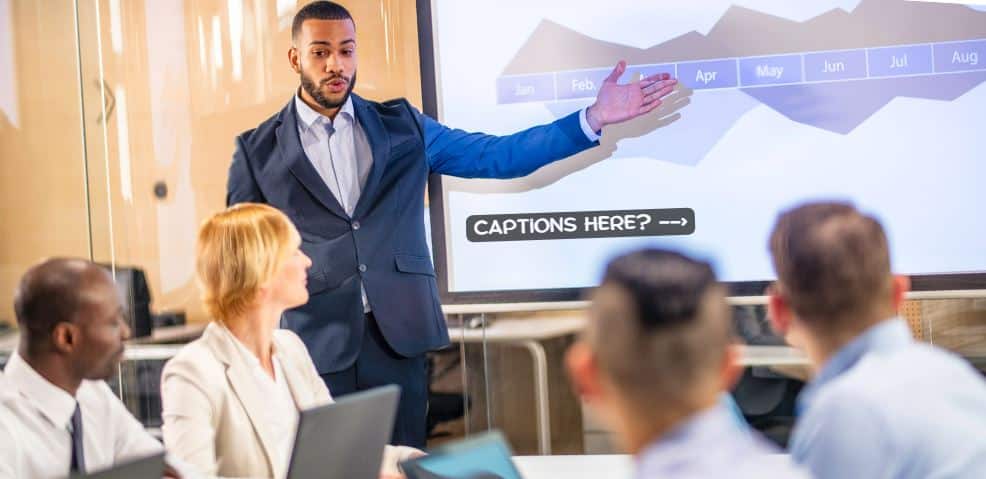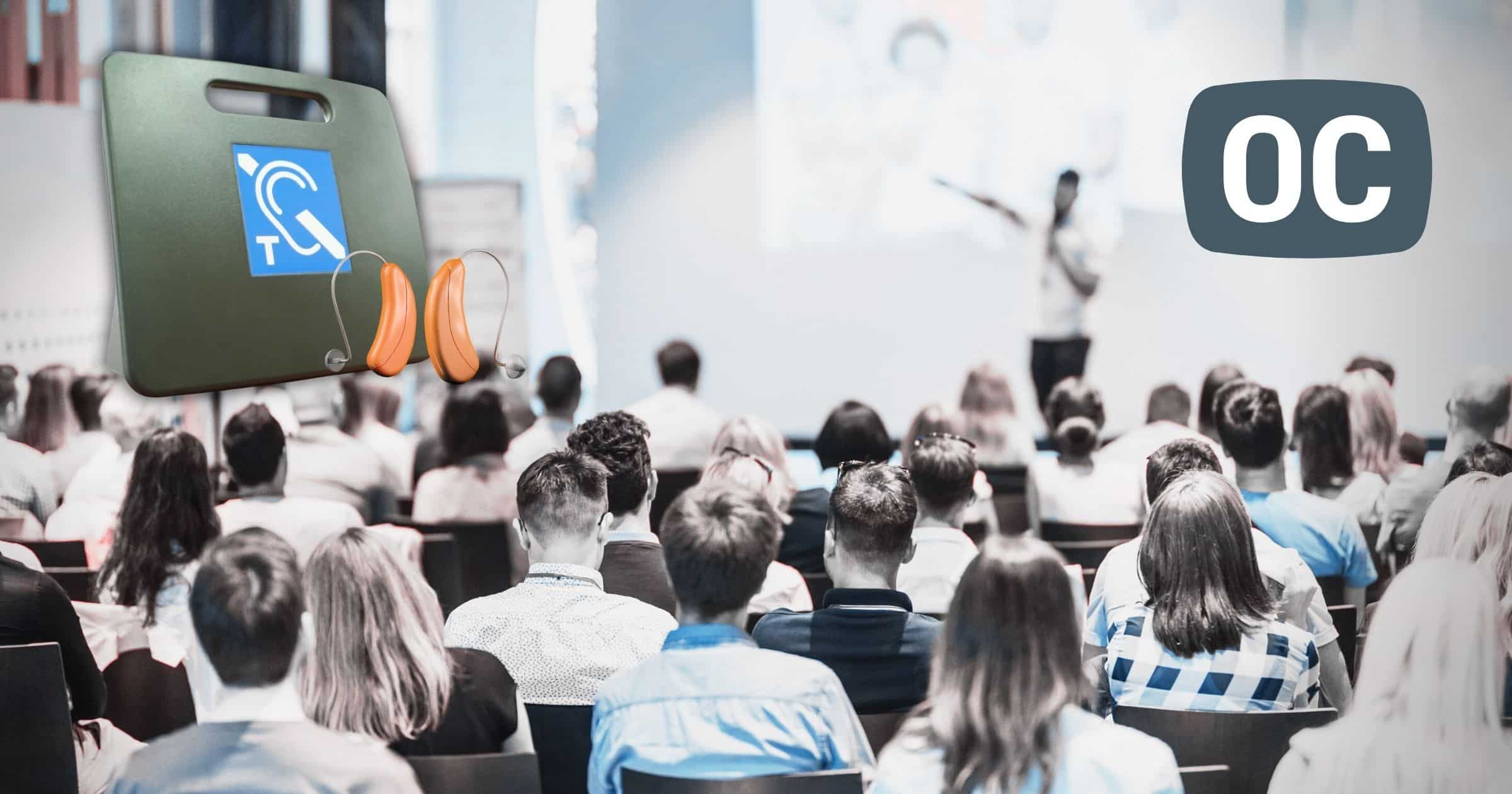I’ve gotten spoiled over the years of my hearing loss advocacy, especially at consumer-related conventions where accommodations are plentiful. Thank you HLAA for always supporting our hearing loss needs with both hearing loops and CART in every session!
But sometimes I speak at other types of conferences in hopes of sharing a hearing loss advocacy message with more mainstream audiences. At these meetings, accommodations are usually pretty limited, even when requested in advance. Often the organizers have never heard of CART or hearing loops, and often do not have a budget for accommodations of this type.
This is frustrating for so many reasons, but especially as an advocate who strongly believes there should be equal access for people with hearing loss everywhere we go. I sometimes speak at these conferences anyway, hoping my presence and presentation will help educate the organizers and attendees; and perhaps move the needle for next time.
Sometimes We Must Create Our Own Accessibility

Remote microphones, like the Signia Streamline Mic, can be helpful
Even without formal accommodations, I can sometimes muddle through, using Hear & Beyond’s handy tool H.E.A.R. to assess the listening situation and optimize it for better understanding.
Helpful adjustments include sitting near the front, so I am as close to the speaker as possible to help with speechreading. If it is a small session, I let the speaker know about my hearing loss before the presentation begins in hopes it inspires them to speak louder and slower.
People with hearing loss who use a remote microphone can also ask the speaker to clip it to their collar for the presentation, bringing the speaker’s voice directly into their hearing devices.
If the speaker is using PowerPoint slides, they may be willing to enable PowerPoint’s auto-captioning feature, so their speech is automatically captioned onto the PowerPoint slide. Detailed instructions can be found in my recent post No Captions at a Conference? Try PowerPoint! PowerPoint captions tend to be quite accurate as long as the presenter is standing close enough to the computer’s microphone to create a strong signal.
Sitting up front also gives my speech-to-text app the best possible chance at picking up the speaker’s voice accurately. Sometimes this strategy works amazingly well, especially if the speaker has a strong and clear presentation style. But if the person speaks rapidly or has a difficult accent, results can be mixed, sometimes to comic effect.

At one recent conference, my seatmate and I were practically laughing out loud at the nonsense and sometimes raunchy language depicted on the speech-to-text display. We couldn’t understand the presentation at all, but at least we enjoyed it!
What if You are a Presenter?
Presenting at a conference that is not hearing-loss friendly can be a challenge, especially during Q&A. My presentations always include the fact that I have hearing loss, so nobody is shocked when I have trouble understanding questions from the audience. Rather than be deterred, I try to use the difficulty as a teaching moment.
While I walk closer to the person asking the question, I comment on the fact that I am moving closer to better hear the question. This usually makes them speak louder, which is helpful, but it also highlights the realities of communicating with hearing loss.
Hopefully it helps raises awareness as well as the volume of their voice.

Shari Eberts is a passionate hearing health advocate and internationally recognized author and speaker on hearing loss issues. She is the founder of Living with Hearing Loss, a popular blog and online community for people with hearing loss, and an executive producer of We Hear You, an award-winning documentary about the hearing loss experience. Her book, Hear & Beyond: Live Skillfully with Hearing Loss, (co-authored with Gael Hannan) is the ultimate survival guide to living well with hearing loss. Shari has an adult-onset genetic hearing loss and hopes that by sharing her story, she will help others to live more peacefully with their own hearing issues. Connect with Shari: Blog, Facebook, LinkedIn, Twitter.






